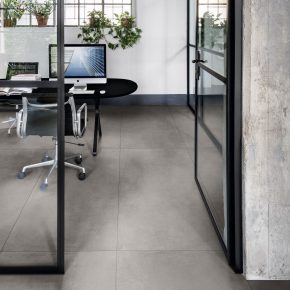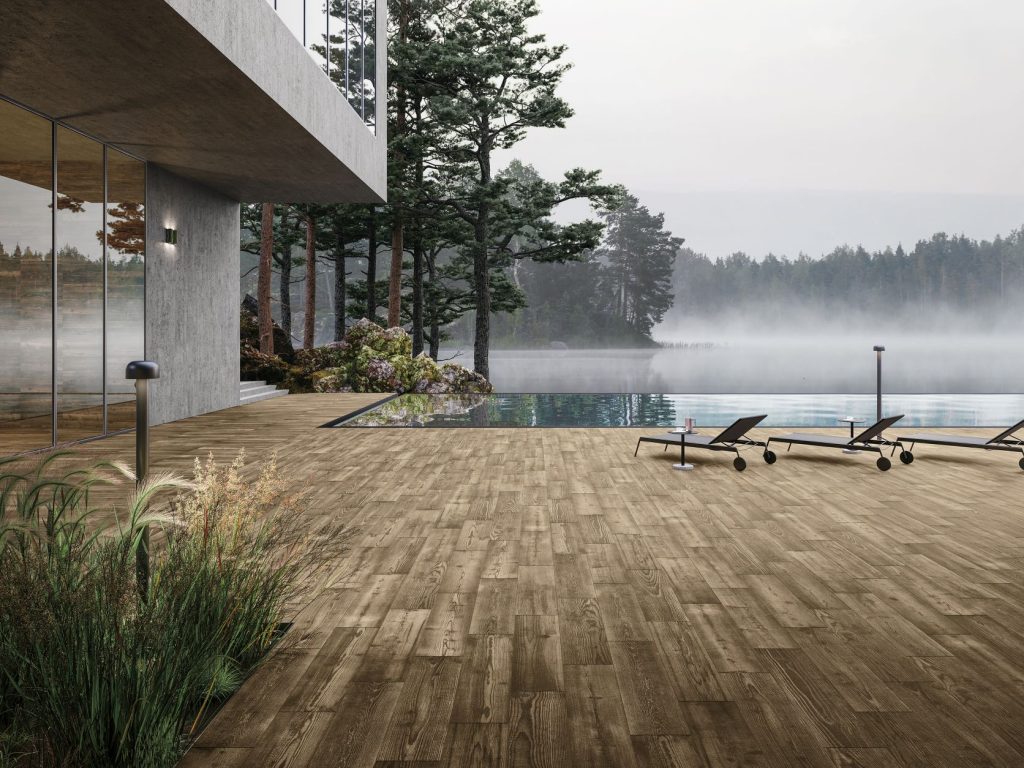
CTD: Put safety first with the pendulum test for slip resistance
Safety is paramount to any project across the construction sector, and the correct choice of flooring is an important part of this. In this article Mark Hillier, specification manager at leading commercial tile supplier CTD Architectural Tiles, explains the vital role of the pendulum test in avoiding slipping up on safety standards.
“While aesthetic considerations, budget and timescales will all play an important role when it comes to choosing floor coverings for any project, minimising slip risk must always be the priority.
Porcelain tiles remain a popular flooring choice across the commercial and residential sectors thanks to the material’s reputation for safety. It’s important to note, however, that not all porcelain tiles are made equal, and a product’s (PTV) is the most valuable measurement of its suitability for a project.

Why is the pendulum test important?
The pendulum test is recommended by the Health & Safety Executive (HSE) as the most accurate and reliable measure of slip resistance for both wet and dry conditions. Not only is the pendulum test recognised by the HSE, but it’s also important to note that it is the only measure of the slip resistance of flooring accepted in legal and insurance matters.
How does it work?
The test replicates the effect of a human heel making contact with a floor tile, through the use of a sole. Two types of rubber sole – known as Slider 55 and Slider 96 – swing across the surface of the tile, replicating a bare foot or shod foot respectively. This process is carried out several times with each slider under both wet and dry conditions in order to gain an average figure – which is the PTV used to define a product’s anti-slip credentials.

Some manufacturers may establish a tile’s PTV rating in-house, but as the UK standard, manufacturers in other parts of the world may test using a different method. If this is the case, some tile suppliers are able to carry out the pendulum test instead.
What do the results mean?
Once the pendulum test has been carried out, the PTV score is divided into three categories: PTV0-24 means a high slip potential, PTV25-35 indicates a medium slip risk, and a rating of PTV36 or higher refers to a low slip risk.

To put this into context, a PTV36 rating is the equivalent to an approximately one in one million slip risk, while a PTV score of 19 equates to a one in two risk of a slipping accident. For this reason, it’s clear why a minimum PTV score of 36 is required for any new or refurbished public building – and why there’s an increasing demand for floor tiles offering a PTV40 rating.”
There are a huge range of floor tiles available on the market offering both safety and style. To discuss how CTD Architectural Tiles can assist with tile specification for your next project, contact info@ctdarchitecturaltiles.co.
For more information and to view the company’s full tile collections, visit www.ctdarchitecturaltiles.co.
To read about CTD Architectural Tiles making it easy for designers to build hygiene into every project, click here.
Visit Supplier's page
Latest news

29th April 2025
Senior pledges to ‘bee’ part of the solution with new biodiversity initiative
Senior Architectural Systems has installed its first on-site beehive, marking another step forward in its commitment to sustainability and biodiversity.
Posted in Articles, Building Industry News, Building Products & Structures, Building Services, Curtain Walling, Doors, Glass, Glazing, Innovations & New Products, news, Restoration & Refurbishment, Retrofit & Renovation, Sustainability & Energy Efficiency, Walls, Windows
29th April 2025
West Fraser range delivering key benefits for South-East carpentry company
An experienced carpenter and building site manager who has recently set up his own company is using high performance panel products from the West Fraser range.
Posted in Articles, Building Industry News, Building Products & Structures, Building Systems, Case Studies, Garden, Restoration & Refurbishment, Retrofit & Renovation, Sustainability & Energy Efficiency, Timber Buildings and Timber Products
29th April 2025
CPD Courses Available Online From Ecological Building Systems
Ecological Building Systems, a leading supplier of natural building products for sustainable construction, has revealed its comprehensive CPD programme for the year ahead.
Posted in Articles, Building Industry Events, Building Industry News, Building Products & Structures, Building Services, Continuing Professional Development (CPD's), Information Technology, Innovations & New Products, Insulation, Restoration & Refurbishment, Retrofit & Renovation, Seminars, Sustainability & Energy Efficiency, Training, Walls, Waste Management & Recycling
29th April 2025
WindowBASE launches new prospect databases at FIT Show
Visit WindowBASE at the FIT Show to see first-hand how it helps companies find new customers – the company is launching an easy-to-use, intuitive platform on Stand G16 at the NEC Birmingham from 29th April – 1st May.
Posted in Articles, Building Industry Events, Building Industry News, Building Products & Structures, Building Services, Doors, Exhibitions and Conferences, Glass, Glazing, Information Technology, Innovations & New Products, Posts, Publications, Research & Materials Testing, Restoration & Refurbishment, Retrofit & Renovation, Windows
 Sign up:
Sign up: